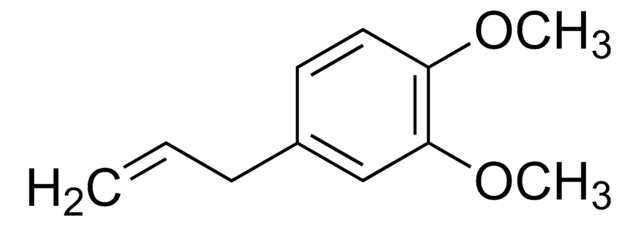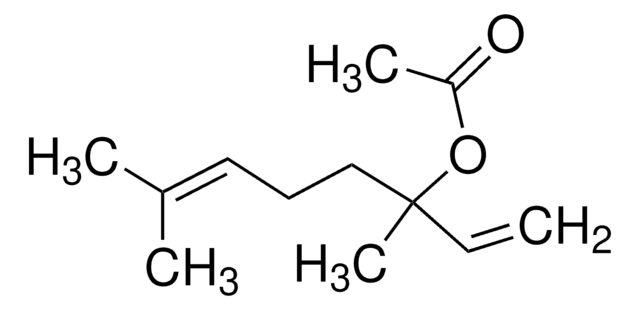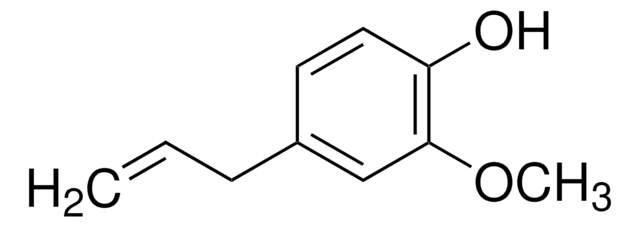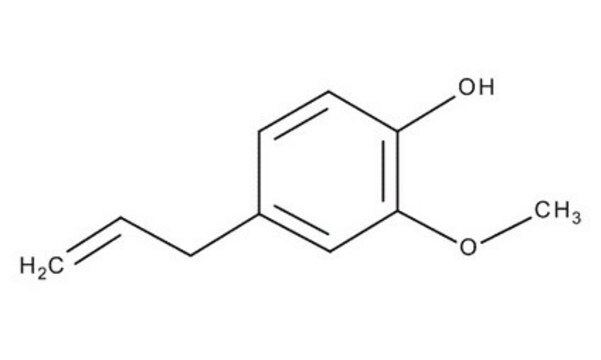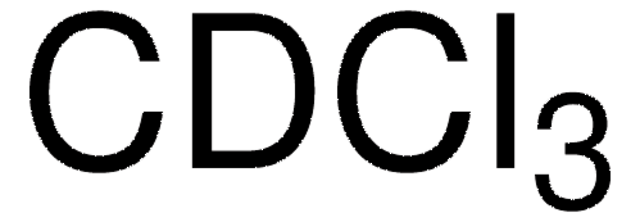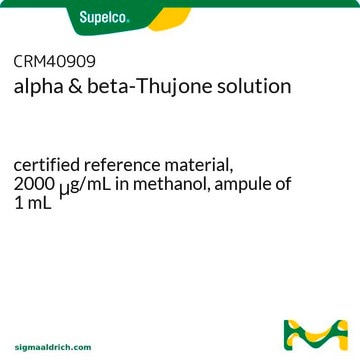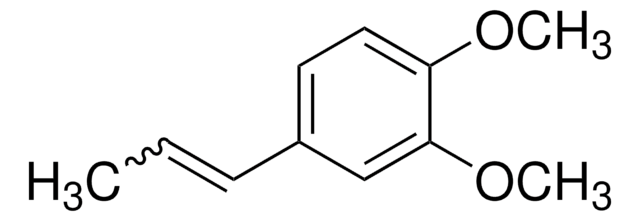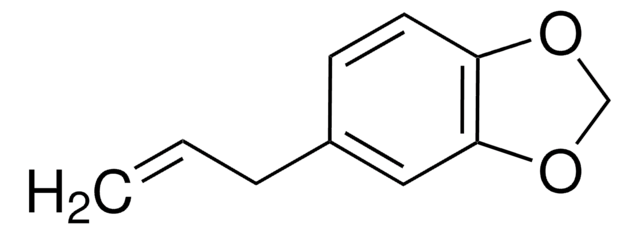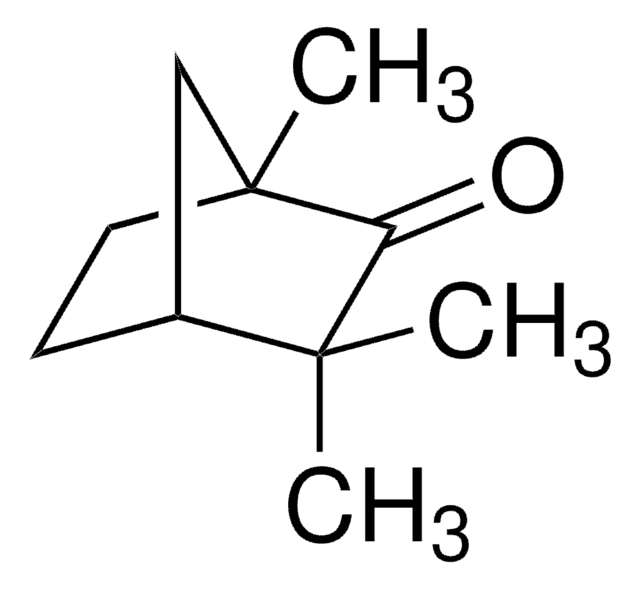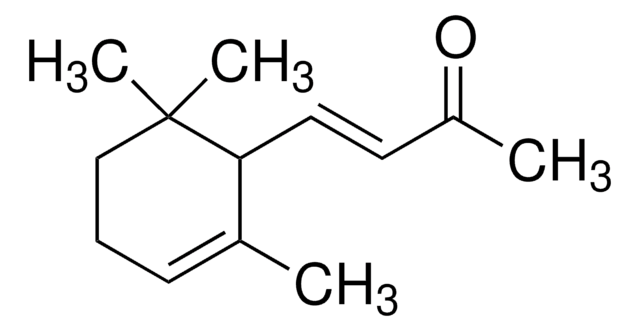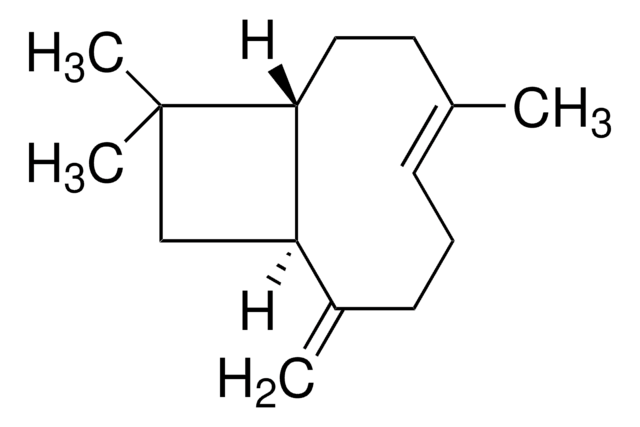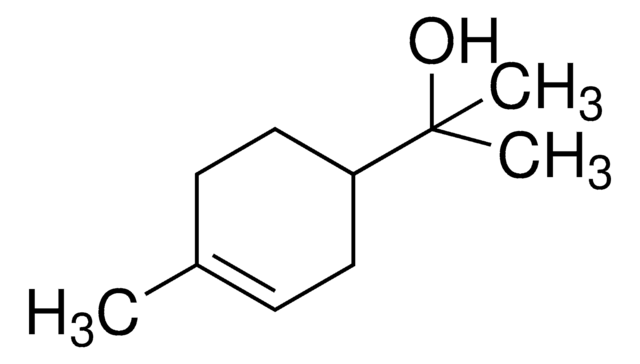04607
Methyl eugenol
analytical standard
Synonym(s):
Eugenol methyl ether, 4-Allyl-1,2-dimethoxybenzene, Eugenyl methyl ether
About This Item
Recommended Products
grade
analytical standard
Quality Level
Assay
>98% (GC)
shelf life
limited shelf life, expiry date on the label
technique(s)
HPLC: suitable
gas chromatography (GC): suitable
refractive index
n20/D 1.534 (lit.)
bp
254-255 °C (lit.)
mp
−4 °C (lit.)
density
1.036 g/mL at 25 °C (lit.)
application(s)
cleaning products
cosmetics
flavors and fragrances
food and beverages
personal care
format
neat
storage temp.
2-8°C
SMILES string
COc1ccc(CC=C)cc1OC
InChI
1S/C11H14O2/c1-4-5-9-6-7-10(12-2)11(8-9)13-3/h4,6-8H,1,5H2,2-3H3
InChI key
ZYEMGPIYFIJGTP-UHFFFAOYSA-N
Looking for similar products? Visit Product Comparison Guide
General description
Application
- Essential oil of Pimenta pseudocaryophyllus using high-performance liquid chromatography (HPLC). The purity of the extracted compound is then determined by gas chromatography coupled to flame ionization detector (GC/FID).
- Stem bark of Cinnamomum zeylanicum Blume using reversed-phase high-performance liquid chromatography (RP-HPLC) with UV-visible detection.
- Rosa hybrida using gas-chromatography coupled to mass spectrometry (GC-MS) technique.
Packaging
Other Notes
Signal Word
Warning
Hazard Statements
Precautionary Statements
Hazard Classifications
Acute Tox. 4 Oral - Aquatic Chronic 2 - Carc. 2 - Muta. 2
WGK
WGK 1
Flash Point(F)
closed cup
Flash Point(C)
closed cup
Choose from one of the most recent versions:
Already Own This Product?
Find documentation for the products that you have recently purchased in the Document Library.
Customers Also Viewed
Our team of scientists has experience in all areas of research including Life Science, Material Science, Chemical Synthesis, Chromatography, Analytical and many others.
Contact Technical Service